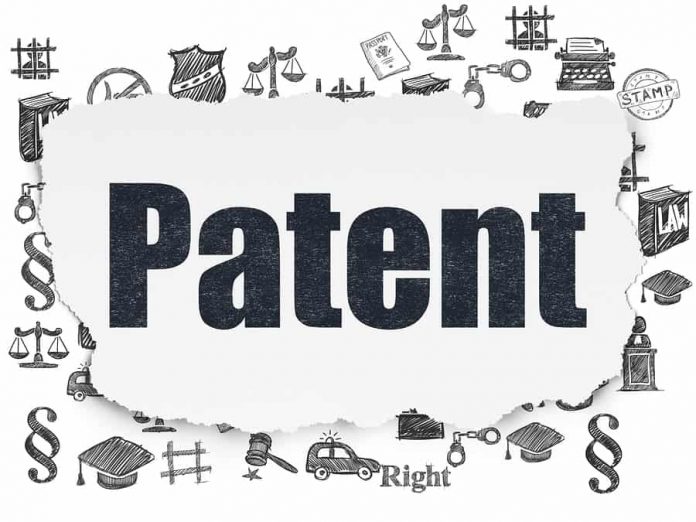This article is written by Satyaki Deb, an LL.M. (IP) candidate from the Rajiv Gandhi School of Intellectual Property Law, IIT Kharagpur. This article provides a comprehensive picture of the types of patents in relative detail across the jurisdictions of the US, Europe and India as far as practicable.
This article has been published by Sneha Mahawar.
Table of Contents
Introduction
Generally speaking, patents are certificates given by the government which empowers the assignee or patent holder the right to exclude others (negative rights) from making, using, or selling the invention envisaged under such a certificate for a limited period of time. The first granted patent can be traced back to 1421 in Florence, Italy, where a three-year monopoly was granted to architect and engineer Filippo Brunelleschi for his industrial invention of a barge with hoisting gear for the purpose of transporting marbles. Fast forward six centuries ahead, there are many types of patents now that grant the patent holders negative rights over their inventions, and this article will portray such types in relative detail across the jurisdictions of the US, Europe, and India as far as practicable.
What is a patent
Before talking about types of patents, it is logically imperative to understand briefly, from a legal perspective, what a patent is. According to the World Intellectual Property Organization (WIPO), a patent is an exclusive right granted for an invention (product/process) that is either a new way of doing something or provides a technical solution to a problem, and these exclusive rights are granted in lieu of disclosing to the public technical information (like best mode enablement, etc.) regarding the invention.
In a patent application, there are usually various parts like specifications, drawings, and claims. It is this “claims” portion that is perhaps the most significant part of the application, as this encompasses the invention for which the applicant claims protection. The specifications, claims, etc. in a patent application must conform to the disclosure requirements as prescribed in the relevant jurisdiction. Section 10 of the Indian Patent Act, 1970, 35 U.S.C. 112 of the USPTO, and Article 83 of the European Patent Convention (EPC) and their corresponding rules deal with how technical information needs to be disclosed and claims need to be constructed, etc. There are generally two types of claims- independent claims and dependent claims, and they shall be discussed appropriately in a relevant context at a later stage.
Different types of patent
There are different types of patents that are granted across the world, and naturally, they vary across the world as patent rights are territorial rights (i.e., patent rights are enforceable only in the territory they are granted in). The different types of patents are discussed as follows:
Product patents
Simply speaking, sometimes the inventors develop a product and/or method that provides a technical solution to a problem or is a new method of doing something. As mentioned before, it is the claims in a patent application (if deemed fit as per patent laws and rules) by the concerned patent office that gets patent protection. So, when in one or more claims a product is claimed to be protected and gets the said grant, such a patent is called a product patent. It is pertinent to note here that generally more than one invention cannot be claimed under one application and needs to be claimed by separate applications with some limited exceptions of interrelated products etc. Patent applications generally get rejected for a plurality of inventions if more than one product is claimed. To phrase it a little more technically, the independent claims of a (product) patent application cannot seek protection for more than one product or for a group of products linked so as to form a single inventive concept. But there can be more than one independent claim pertaining to the same product.
Claims are basically boundaries that define the invention, and anything falling within such boundaries is what the applicant wants protection for. Independent claims are standalone limitations that sufficiently define the invention, whereas dependent claims further qualify/define/limit a previous independent claim. So, in a product patent, it needs to have at least one independent claim that sufficiently defines the invention (product) and other dependent claims (s) further limiting/defining such product.
The wordings in the claims help us to construe what is being sought for protection, i.e., a product or methods. It is always best to understand with examples from claims of granted patents.
Example: If we take the example of a US patent US10643081 B2 (“Remote biometric monitoring system”), which is an example obtained from doing a claims search with the phrase “artificial intelligence” in the Orbit Express database, it can be seen that there are two independent claims- claim 1 and claim 11—out of a total of 20 claims. Claim 1 goes as “A system for remotely monitoring a sleeping subject, the system comprising: a digital camera….and flag a video clip for review based on greater than a threshold amount of motion being determined by analyzing the motion outside of the bounding box defined by the artificial intelligence module.” Claim 11 goes as “ A system for remotely monitoring a sleeping person, the system comprising: a digital camera configured to capture images of a person, the digital camera….and flag a video clip for review based on greater than a threshold amount of motion being determined by analyzing the motion outside of the bounding box defined by the artificial intelligence module.” As the wordings of the independent claims clearly show, it is a “system” that is being claimed, which helps us conclude that this is a product patent. Even the wordings of the dependent claims starts with phrases like “The system of claim 1…” and “The system of claim 11…” and this reaffirms the fact that the example is a product patent.
At a later stage, after discussing process patents, it will be shown that in a patent, both product and method claims can be there too. Also, for this reason, some scholars do not like to classify product patents as a type of patent and prefer to refer to the invention as product claims and process claims. But the above example is a case among many patents where only products have been claimed and granted, and it is logically believed that the term ‘product patents’ stands justified as a type of patent.
To sum up, in the wording of Section 48(a) of the Indian Patent Act, 1970, a patentee whose patent’s subject matter is a product can enjoy the exclusive right to prevent third parties from making, using, offering for sale, selling, or importing such products in India without his consent. In other words, with respect to a product patent, the rights envisaged under the aforementioned Section 48(a) are available to the patentee. The corresponding provision in the US for rights related to product patents is 35 U.S.C 154 (d) (1) (A) (i). The relevant EPC provision in this regard is Article 64(1).
Process patents
As the name suggests, process patents are those patents where the claims envisage the process of making something. In other words, only the methods are protected under patent rights and not the end product. Again, some scholars prefer to use the term utility patents (discussed later) when only method claims are granted protection. But in India, since utility patents are not granted, the Indian Patent Act, 1970, has been long granting process patents. As a matter of fact, before India implemented the minimum requirements under TRIPS by the three amendments in 1999, 2002, and 2005, process patents were preferred more. This is because process patents provided less degree of protection as only the method was being protected and not the end product, and this was very beneficial for developing countries like India. It was only after the 2005 amendment to Indian patent laws, did product patents became mainstream in India.
Basically, with process patent protection, it becomes easier for the competitors to invent an alternative method to produce the same or minorly modified same end product. This was immensely beneficial for unpredictable arts like biotechnology and developing and least developed countries preferred process patents over product patents for pharmaceutical inventions, etc. But this was against the interests of the big private players who wanted to enjoy a higher degree of patent rights, and thus product patents were made a minimum requirement under TRIPS that all countries needed to follow.
It is imperative now to understand process patents by way of example.
Example: If we look at the Indian patent IN 342229 (“Process to obtain an ultrafine gcc with high light scattering properties and high solid content”), there are 13 claims (1st claim is an independent claim), all of which start with the word “process.” Claim 1 goes as “Process for the manufacturing of a calcium carbonate-comprising material comprising the steps of..”. This shows us that the example is a process patent. One can search for the same patent in ‘inPASS’ with the patent number or title and look at the relevant patent documents, especially the claims, to understand further how method claims are getting constructed.
To sum up, in the wordings of Section 48(b) of the Indian Patent Act, 1970, a patentee, whose patent’s subject matter is a process can enjoy the exclusive right to prevent third parties from the act of using that process and making, using, offering for sale, selling, or importing products made directly from such process in India without his consent. The corresponding provision in the US for rights related to product patents is 35 U.S.C. 154 (d) (1) (A) (ii). The relevant EPC provision in this regard is Article 64(2).
Provisional patents
As the name suggests, provisional patents are temporary patents. In other words, the rights enjoyed by the patentee by virtue of a provisional patent are provisional in nature and can become mainstream upon fulfilling the territorial criteria of patentability within a prescribed time.
The US permits provisional patent applications where one can file the same without a formal patent claim, oath or declaration or fulfilling any information disclosure (prior art) requirements (since provisional applications are not examined). The objective behind this prima facie shortcut process is to provide inventors with the option of a lower-cost first patent filing in the US which helps to establish an early effective filing date. One can also use the term “patent pending” with regard to the invention of the provisional application. The same has been dealt with under 35 U.S.C. 111(b).
There is a non-extendable 12-month window of time in the US (and in most countries of the world) in which the complete non-provisional patent application needs to be filed as per 35 U.S.C. 111(a). In the US, there is two months window time after the 12-month window to file the full non-provisional patent application where the benefits of provisional application may be restored if due fees are paid and it is shown in a statement that the delay was unintentional.
Although it is not mandatory, it is advised that the applicant submit a few drawings with the provisional application that help to understand the invention in compliance with 35 U.S.C. 113.
One pertinent thing that needs to be noted in this regard is that though requirements are relaxed in a provisional application as compared to a non-provisional application, the following must be mentioned in a provisional application, viz:
- That the application is a provisional application.
- All the inventor name(s).
- All the residences of the inventor(s).
- Title of the invention.
- Name and registration number of agent or attorney and docket number (if applicable).
- Address of correspondence.
- Any government agency that has a property interest in the application.
In India too, the same benefit of filing a provisional application for a patent is available and gives the benefits of securing an early filing date (which becomes a priority date), a 12-month window to file the complete patent specifications, and is a low-cost affair. This is a very commercially viable plan, as with the “patent pending” status, negotiations for further business or investments with regard to the invention of the provisional application become easier and more reliable. Section 9(1) of the Patent Act, 1970, deals with the provisional application, and one can find how to file a provisional patent application in India here.
The corresponding provision in the EPC to get provisional status is Article 67(1), which states that provisional status in the contracting states designated in the application can be obtained from the date of publication.
Design patents
At the outset, it is pertinent to mention that the concept of design patents is a US concept and not permitted in India. Designs get protected in India under the Designs Act, 2000, subject to fulfillment of related laws and rules, but the same is not patent protection but only design protection (proprietor gets copyright for design) for 10 years (extendable by 5 years upon fulfillment of certain conditions).
In the US, design patents have been defined under 35 U.S.C. 171. As stated in In re Frick (1960), patents can be granted for designs vide 35 U.S.C. 171, subject to other provisions of Title 35. According to this provision, anyone who invents a new, original, and ornamental design for an article of manufacture may get a design patent for the same subject to fulfillment of related rules and conditions. It is clear from the statutory definition that novelty, originality, and ornamentality are criteria for getting design patent protection besides passing subject matter eligibility. Thus, it can be stated that “while a patentable design may contain old elements, the finished product must have an unobvious appearance and not merely be the result of an obvious combination of the old elements,” as held in the Paul W. Garbo (1961) case.
Anyone versed with the basics of patent law can see that the criteria to get a product/process patent match more or less with that of a design patent except for the criteria of ornamentality which has replaced the ‘industrial applicability’ criteria for product/process patents.
Generally speaking ornamentality for an article of manufacture is the aesthetic features (shapes/configuration etc.) of such an article that has some functionality. It is very pertinent to note that the design needs to be unique and distinctive to the article and dictated by the function that it performs, but only the aesthetic aspects are protected and the functionality is not protected by design patents.
According to 37 C.F.R. 1.153(a), for design patents, only one claim is permitted and the same should indicate the ornamental design to the specified article in formal terms. Thus, the law clearly states that design patents only protect ornamentation. As the Federal Circuit held in Power Controls Corp. v. Hybrinetics, Inc. (1986), a design patent will be invalid if the same is “primarily functional rather than ornamental.” But this does not at all mean that a design patent cannot have any functionality. The United States Court of Customs and Patent Appeals (CCPA) held in In re Garbo (1961) that a design patent can have functional elements and still be patentable “only if the design has an unobvious appearance distinct from that dictated solely by functional considerations.” To clarify the ornamentality and functionality aspect further, it can be stated along the lines of In re Carletti (1964) that often an invention that is primarily functional has some features or configurations that are pleasing to look upon. But unless such ornamentations or aesthetic features are not made for the purpose of ornamentation, such designs will not be patentable. In other words, if the ornamentation is necessary for the functionality of the product or invention, then such ornamentality cannot be protected by a design patent.
For example: in a golf club, there may be some configurations or features that are pleasing to look at, but if such configurations are the results of the functional consideration of such an article, then such ornamentations cannot get a design patent.
This brings us to the pertinent point of what elements are considered for design patent infringement. As stated in In re Rubinfield (1959), the design should be considered as a whole for the purpose of determining design patent infringement. Also, Applied Arts Corp. v. Grand Rapids Metalcraft Corp. (1933) made it clear that only the non-functional design aspects would be relevant in a case of design patent infringement. To this end, the test shall be the “sameness upon the eye test” established by the Hon’ble US Supreme Court in Gorham v. White (1871). According to this test, if an observer, by ordinary observation, is induced to purchase one design, supposing it to be the other, then there is a case of design patent infringement. 35 U.S.C. Section 289 makes it illegal to sell an article of manufacture protected by a design patent, and if such infringement is successfully proved, the patentee can recover the total profit the infringer made by infringing the design patent. The relevant case law in this regard is the famous case of Apple v. Samsung (2015), where Apple sued Samsung, alleging that its design patent with respect to iPhones was infringed by Samsung.
According to 35 U.S.C. 173, design patents are protected in the US for 15 years from the date of grant for design applications filed on or after May 13, 2015.
Chapter 1500 of the Manual of Patent Examining Procedure (MPEP) deals with the procedural aspects of design patents.
Utility patents
Utility patents are another US concept and are not granted in India. Anyone who invents or discovers any new and useful process, machine, article of manufacture, composition of matter, or any new useful improvement thereof can get utility patent protection for 20 years just like regular patents (some countries like China give 10-year protection for utility model patents). Interestingly, more than regular patent applications, the USPTO gets utility patent applications. This is because of the lower degree of requirements of a utility patent application than a regular patent application. For example, lower levels of non-obviousness can be protected. In other words, marginal improvements can qualify for utility patents. Also, maintenance of utility patents is cheaper compared to regular patents and is subject to 37 CFR 1.20, and the amount of the current fee can be viewed in the USPTO Fee Schedule. Regarding when to pay and how often to pay the maintenance fees, the same can be obtained from the Patent Maintenance Fees Storefront. If the maintenance fees are not duly paid, just like regular patents, the utility patent protection lapses too, and the utility patent rights no longer remain enforceable. A business method patent is an example of utility patent in the US.
There are usually two types of utility patents, viz- provisional and non-provisional. As discussed before, under the heading of provisional patents, the term ‘provisonal’ refers to temporary protection with the privilege of ‘patent pending’ status. Whereas the non-provisional utility patent application is the one where the applicant files with complete specifications. The provisional route is the quick and inexpensive way to establish a filing date in the US, and this filing date can be claimed within the twelve-month window frame by submitting the non-provisional or complete application. It is pertinent to note that if this twelve-month window is crossed, the provisional application will not be examined and will get abandoned status. After the non-provisional application is submitted, the examiner examines the same for patentability, and if all the requirements are met, a non-provisional utility patent application is granted. Statistically speaking, every year the USPTO receives approximately half a million patent applications, and the majority of these are non-provisional utility patent applications.
The above discussions clearly show that action can be taken for utility patent infringement too. Usually, the claim for utility patent infringement is brought under the Federal Patent Act in Federal District Court. The relevant provision that deals with the jurisdiction for bringing in infringement claims are 28 U.S.C.A. 1338. To decide on the venue, the relevant provision will be 28 U.S. Code 1391, which states that the action for infringement of the patentee’s rights may be brought in the judicial district where the defendant has his place of residence or the judicial district in which a substantial portion of the infringement of patent rights took place, thereby giving rise to the claims. A utility patentee can take such action when any person without his authority makes, uses, offers for sale, or sells any utility-patented invention in the US by importing or otherwise during the term of the utility patent.
The corresponding provision in the EPC for utility patents is Article 140.
Plant patents
Plant patents are granted in the US, but not in India. In India, there is the Protection of Plant Varieties and Farmers Rights Act, 2001, with equivalent purposes and adjusted to serve India.
In the US, 35 U.S.C 161 deals with plant patents. According to this provision, anyone who invents or discovers and asexually reproduces any distinct and new variety of plant other than a tuber propagated plant or a plant found in an uncultivated state can get a plant patent subject to the conditions and requirements of the 35 U.S.C Title.
The grant of protection is for 20 years from the date of filing the application, just like regular patents. Regular patenting requirements apply herein too, like novelty, non-obviousness, industrial applicability, and subject matter restrictions.
It is pertinent to note here that for plant patents, plants in their ordinary meaning are considered. Algae and macro-fungi are also considered as plants, but bacteria will not be considered here.
Some of the accepted modes of asexual reproduction in plants include:
- Rooting Cuttings
- Grafting and Budding
- Apomictic Seeds
- Bulbs
- Division
- Slips
- Layering
- Rhizomes
- Runners
- Corms
- Tissue Culture etc.
The reason only asexual reproduction is considered in this regard is because asexual reproduction leads to uniformity and stability in the plant.
Conclusion
After perusing the various types of patents, it is clear that just like patent rights are territorial in nature, similarly, types of patents vary across states. Bearing this in mind, a strategic approach becomes quintessential. For example- sometimes the invention may not be good enough to be a product patent, then one may apply for a utility patent or choose to keep the invention as a trade secret. Another pertinent example is that if one inventor has a US plant patent and wants to protect the same in India, he must not apply for patent protection in India, but he will need to see how he can come under the Protection of Plant Varieties and Farmers Rights Act, 2001. Thus, the types of patents make patenting easier and more efficient and can be strategically used for the benefit of the inventor as well as society.
Frequently Asked Questions (FAQs)
What is the difference between design and utility patents?
Generally speaking, design patents protect the aesthetic aspect, whereas utility patents protect the way an article is used and works. If an invention has both a functional as well as an aesthetic component, both design and utility patents are permissible. But the protection will be separate. In other words, a design patent will protect ornamentality, whereas a utility patent will protect the functionality of such an invention.
References
- https://www.uspto.gov/patents/basics/types-patent-applications/general-information-about-35-U.S.C-161#:~:text=Additional%20Links-,What%20is%20a%20plant%20patent%3F,found%20in%20an%20uncultivated%20state.
- https://www.wipo.int/patents/en/
- https://www.wto.org/english/tratop_e/trips_e/intel2_e.htm
- https://www.legalzoom.com/articles/what-are-the-different-types-of-patents
Students of Lawsikho courses regularly produce writing assignments and work on practical exercises as a part of their coursework and develop themselves in real-life practical skills.
LawSikho has created a telegram group for exchanging legal knowledge, referrals, and various opportunities. You can click on this link and join:
Follow us on Instagram and subscribe to our YouTube channel for more amazing legal content.
 Serato DJ Crack 2025Serato DJ PRO Crack
Serato DJ Crack 2025Serato DJ PRO Crack












 Allow notifications
Allow notifications


